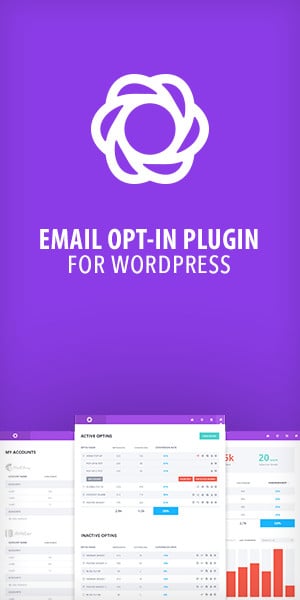Video marketing has become a crucial component of modern marketing strategies. It offers an engaging way to connect with your audience, build brand awareness, and drive conversions. If you’re new to video marketing, getting started might seem daunting. This guide will walk you through the essential steps to launch an effective video marketing campaign.
Understanding the Importance of Video Marketing
Video marketing is a powerful tool for several reasons. It can boost engagement, enhance brand recall, and increase conversion rates. Videos are highly shareable, making them an excellent medium for reaching a broader audience. Moreover, they cater to the growing preference for visual content, especially among younger demographics.
Setting Clear Goals for Your Video Marketing Campaign
Before diving into video production, it’s crucial to define your goals. What do you want to achieve with your video marketing campaign? Common goals include:
- Increasing brand awareness
- Driving traffic to your website
- Generating leads and sales
- Educating your audience
- Building customer loyalty
Having clear objectives will guide your content creation process and help you measure the success of your campaign.
Knowing Your Audience
Understanding your target audience is fundamental to creating content that resonates with them. Consider the following:
- Demographics: Age, gender, location, and interests
- Pain Points: What problems do they need solving?
- Preferences: What type of content do they consume?
- Platforms: Which social media platforms do they use?
Conducting audience research will provide valuable insights into creating videos that appeal to your target market.
Creating a Video Marketing Strategy
A well-defined strategy is essential for the success of your video marketing efforts. Here’s how to create one:
Content Planning: Decide on the types of videos you want to create. Common video formats include:
- Explainer Videos: Simplify complex topics or products.
- Tutorials and How-Tos: Provide step-by-step instructions.
- Product Demos: Showcase your products in action.
- Testimonials and Reviews: Highlight customer experiences.
- Behind-the-Scenes: Give a glimpse into your company culture.
Budgeting: Determine your budget for video production. Consider costs for equipment, software, talent, and marketing.
Scripting and Storyboarding: Write a script and create a storyboard to outline the scenes and shots for your video. This helps ensure your message is clear and coherent.
Production Timeline: Establish a timeline for production, including pre-production, shooting, and post-production.
Producing Your Videos
The production phase involves several steps:
Equipment and Software: Invest in quality equipment and editing software. Essential gear includes a camera, tripod, microphone, and lighting. Popular editing software includes Adobe Premiere Pro, Final Cut Pro, and DaVinci Resolve.
Shooting: Follow your script and storyboard. Pay attention to lighting, sound quality, and framing. Ensure your videos are visually appealing and professional.
Editing: Edit your footage to create a polished final product. Add music, graphics, and special effects as needed. Ensure your video aligns with your brand’s style and tone.
Optimizing Your Videos for SEO
To maximize the reach of your videos, optimize them for search engines:
- Titles and Descriptions: Use relevant keywords in your video titles and descriptions. Ensure they are compelling and informative.
- Tags: Add tags to categorize your videos and make them more discoverable.
- Thumbnails: Create eye-catching thumbnails to attract viewers.
- Transcriptions and Subtitles: Adding transcriptions and subtitles improves accessibility and SEO.
Distributing Your Videos
Choosing the right platforms to distribute your videos is crucial for reaching your audience:
- YouTube: The largest video-sharing platform, ideal for a wide range of content.
- Social Media: Platforms like Facebook, Instagram, Twitter, and LinkedIn are excellent for sharing short, engaging videos.
- Your Website and Blog: Embed videos on your website and blog to increase engagement and time spent on your site.
- Email Marketing: Include videos in your email campaigns to boost click-through rates and engagement.
Promoting Your Videos
Promote your videos to maximize their reach and impact:
- Social Media Ads: Use paid advertising on social media platforms to reach a broader audience.
- Collaborations: Partner with influencers or other brands to expand your reach.
- SEO: Optimize your videos for search engines to improve organic reach.
- Email Marketing: Share your videos with your email subscribers to keep them engaged.
Analyzing and Measuring Success
Tracking the performance of your videos is essential to understand what works and what doesn’t. Key metrics to monitor include:
- Views: The number of times your video has been watched.
- Engagement: Likes, comments, shares, and other interactions.
- Watch Time: How long viewers are watching your video.
- Click-Through Rate (CTR): The percentage of viewers who clicked on your call-to-action.
- Conversion Rate: The percentage of viewers who took a desired action, such as making a purchase.
Use these insights to refine your strategy and improve future videos.
FAQs
What equipment do I need to get started with video marketing?
To get started with video marketing, you need a good camera, a tripod, a microphone for clear audio, and proper lighting. Additionally, video editing software like Adobe Premiere Pro or Final Cut Pro is essential for post-production.
How can I create engaging video content?
Create engaging video content by understanding your audience, telling a compelling story, keeping your videos concise, using high-quality visuals and audio, and incorporating a clear call-to-action.
Which platforms should I use to share my videos?
Share your videos on platforms like YouTube, social media (Facebook, Instagram, Twitter, LinkedIn), your website or blog, and through email marketing to maximize reach and engagement.
How can I optimize my videos for SEO?
Optimize your videos for SEO by using relevant keywords in titles and descriptions, adding tags, creating engaging thumbnails, and including transcriptions and subtitles.
What are the benefits of video marketing for small businesses?
Video marketing benefits small businesses by increasing brand awareness, improving engagement, driving traffic to websites, boosting conversion rates, and providing a higher return on investment compared to other content types.
How can I measure the success of my video marketing efforts?
Measure the success of your video marketing efforts by tracking metrics such as views, engagement (likes, comments, shares), watch time, click-through rates (CTR), and conversion rates.
Conclusion
Getting started with video marketing may seem overwhelming, but by following these steps, you can create a successful strategy that engages your audience and drives results. From planning and production to distribution and analysis, each stage is crucial for creating impactful videos. By leveraging the power of video marketing, you can boost your brand, reach new audiences, and achieve your business goals.




